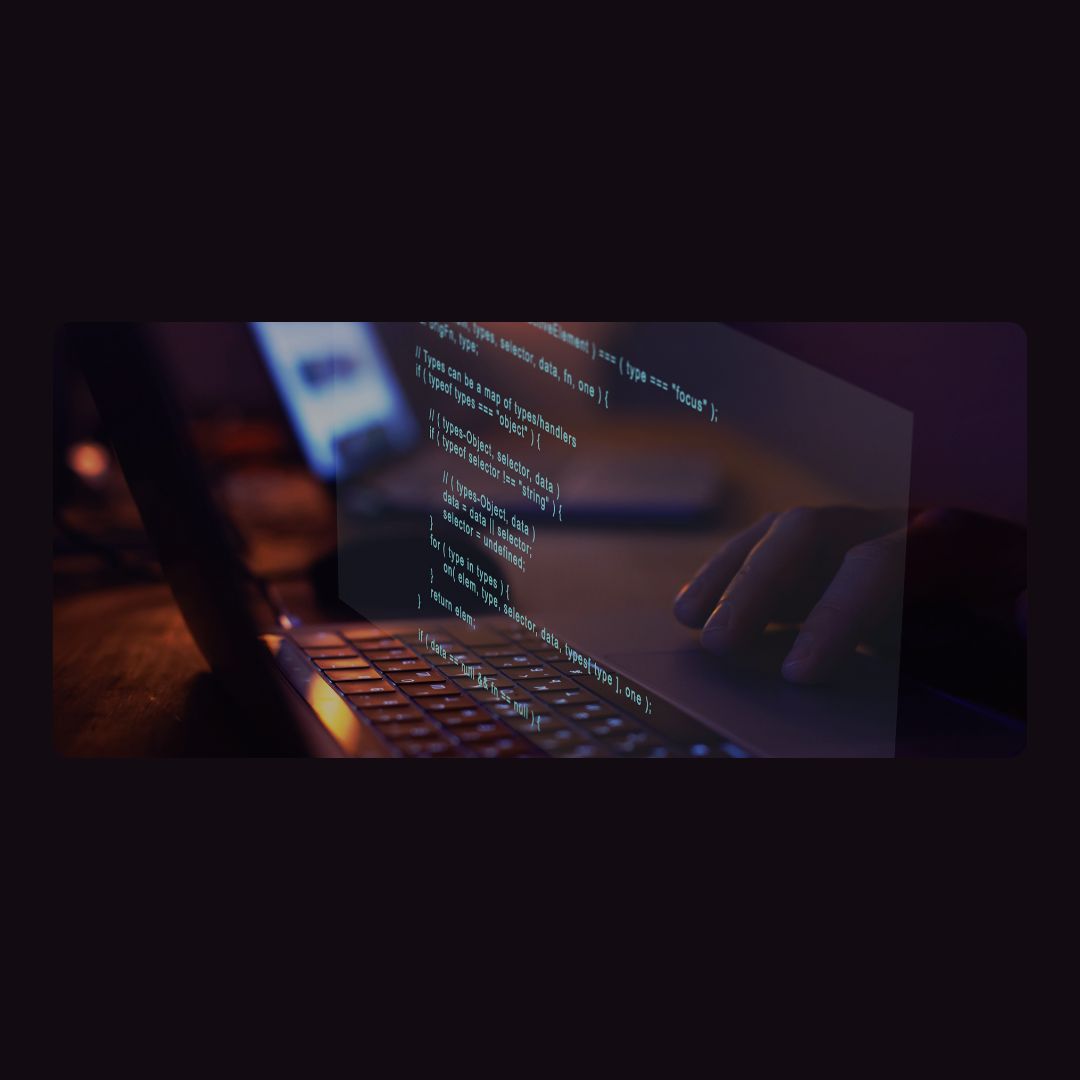Bioinformatics: The Future is Here! The Evolution of Bioinformaticians
Interview Article with Cristina Guijarro-Clarke
I have spent the past 15 years navigating the Life Sciences industry, with the last 10 dedicated to the wild world of staffing. Along the way I have had the privilege of supporting businesses across a wide range of functions, both directly and indirectly. However, one area that has always been my ‘nemesis’… the Voldemort of my staffing journey, if you will…. Bioinformatics.
Despite seeing the role evolve over time, I have never been elbows-deep in recruiting for this space. I work alongside brilliant team members who have mastered it, but I have always been curious to truly understand what makes a Bioinformatician tick and how their role has grown in significance.
And grown it has! With consultancies, outsourcing and biotech’s increasing dependence on Bioinformaticians, coupled with the rise of big data, this role is undergoing an incredible transformation.
Luckily, I had the good fortune of being introduced to the brilliant Cristina Guijarro-Clarke of Broken String Biosciences. Not only has she graciously educated me, but she has also built an incredible personal brand in the world of Bioinformatics. If you haven’t already, do yourself a favour and check out some of her super insightful posts (linked here). She has genuinely helped me go from “What even is this?” to “Ah, so that’s why they’re so essential.”
- The Era of Big Data
- Progression Doesn’t Happen Overnight
- Bioinformatics Careers – Then VS Now
Cristina was kind enough to take the time to answer some key questions…questions I think many people looking to upskill, enter or progress in the world of Bioinformatics would love to hear.
I will admit, I may have approached this a bit naively. With all the hype around AI these days, I went in expecting it to dominate the conversation about change and demand in the field. Spoiler alert: It is not quite the AI takeover we recruiters sometimes assume (note to self and others in my world…roles are not disappearing, they are evolving!).
Our discussion covered everything from essential skills and the talent pool to the challenges of adapting to new technologies. It was enlightening to understand, not only how far the field has come but also where it is heading.
Let’s dig into the insights!
Skills & Talent Pool
Q: What new skills have become essential for Bioinformaticians to stay competitive in the industry today?
A: More so than ever Bioinformaticians need to have knowledge of a very broad set of tools in their toolbox:
- Workflow management through software like Nextflow, Snakemake, WDL
- Workflow executors such as SLURM, batch executors
- Cloud infrastructures (AWS, GCP, Azure)
- Programming languages – R, Python, Java/C++, and sometimes front-end frameworks like React
- Containerization tools such as Docker
- Package management tools like Poetry, Conda, and other virtual environments
- ML applications
- CI/CD and version control with Git
Domain knowledge in Genomics/Biology (e.g., NGS, CRISPR-Cas data, human data) The ability to communicate scientifically but clearly to wide audiences.
Q: How have the qualifications or educational requirements for Bioinformaticians shifted with advancements in AI and data science?
A: The number of skills Bioinformaticians are expected to know and have a high competence of have increased. PhD requirements are becoming increasingly more common, Masters are generally a must.
Q: What technical skills (e.g. machine learning, big data management, cloud computing) do you believe will be crucial for Bioinformaticians in the next five years?
A: All of those, they are already crucial.
Biological domain knowledge. AI will probably reduce the need for Bioinformaticians to do much coding, but no AI can replace a bioinformatician’s ability to understand the context and nuance of biological data.
Infrastructure and DevOps – Building and maintaining efficient, scalable pipelines will become a major focus. Expertise in DevOps and infrastructure management will set bioinformaticians apart.
Sustainable workflow engineering in big data management – particularly with machine learning which is environmentally expensive – even with GPUs. Training models and running large-scale analyses consume huge amounts of energy. We need to start thinking hard about ways to offset this. Whether that’s creating more efficient pipelines or finding ways to use tech more sustainably.
Applying and optimising ML workflows for more specialist use cases, more targeted models with less generalisation are going to be key.
Role Evolution & Responsibilities
Q: How has your role as a Bioinformatician evolved over the past five years with the integration of AI and big data?
A: AI has not made a huge difference; in a sense it has grown the data and expanded the need for insights. The growth and exponential expansion of data has meant large, targeted efforts are required to enable scaling analyses and this means a skills direction in cloud, workflow management and optimising algorithms. There has been a big nudge towards collaborations with SaaS providers to reduce the overhead of infrastructure and DevOps.
Q: What are some new responsibilities you have taken on due to the increasing need for AI and data-driven approaches in your work?
A: There is an increased need to proceed with caution, ensure safe use of AI and keep on top of cyber security, data governance and information provenance is important.
Q: Can you share how your collaboration with other departments (like data science, AI teams, or clinical research) has changed in recent years?
A: The nature of collaboration hasn’t shifted significantly in recent years. In organisations with Bioinformaticians, teams are often integrated, yet roles remain distinct. Bioinformaticians typically manage their own data or AI needs, although there are instances where they act as end users of AI or data products from other teams, particularly in larger organisations. That said, at least in industry, there has been a noticeable increase in collaboration with business teams, particularly in relation to clients. This ensures that bioinformatics products and services are tailored to meet client needs, providing a seamless customer experience. Additionally, there’s been greater cooperation with R&D teams, helping them gather insights more quickly through streamlined, automated analyses.
Adapting to New Tools & Technologies
Q: Which AI tools or platforms have significantly impacted your work, and how have you adapted to using them?
A: Tools such as ChatGPT, Gemini etc have helped with quick searches (and have largely replaced google), summarising complex information, improving documentation. But the largest impact is probably the need to review and correct more code written by AI where it is less than optimal, nonsensical and not sensible.
Q: How challenging has it been to keep up with the fast-paced evolution of bioinformatics technologies and methodologies?
A: It’s definitely a challenge. I have gained some valuable experience across various roles, which is a great way to upskill on the job, encountering new technologies, new data, and new flavours of Bioinformatics responsibilities. But otherwise, there has been a real risk of burn out as I try to develop new skills and learn new methods and tech outside of work for professional development. Shorter courses help. And so does doom scrolling through LinkedIn, following the right people has helped with picking up on new scientific trends, breakthroughs and tools.
Q: Do you find that the industry provides adequate training and support for Bioinformaticians to learn and implement these new technologies?
A: It has the potential to – a huge amount of Bioinformatics skills is learned on the job.
There are some communities out there providing free training. I suspect that it may never be enough though, because bioinformatics is such a broad field, that by the time the training and support is widely available and advertised, there’s another new tech taking over. The best way to keep on top of new tech is to join either large organisations that can provide the space for new technical projects or very small start-up type organisations that are in the perfect position to start with the new technology from the bottom up.
Multiple Roles & Expectations
Q: Do you think the demand for Bioinformaticians to wear multiple hats, such as being proficient in both coding and biological interpretation has increased?
A: It’s gone beyond coding and biological interpretation, which is the traditional definition of a Bioinformatician. Bioinformaticians are now ML engineers/scientists, DevOps specialists, cloud architects, software developers, IT support, biostatisticians, product owners, scrum masters and more. It has definitely increased.
Q: How do you manage the balance between developing expertise in new areas (like machine learning) and maintaining core bioinformatics skills?
A: What balance? I have unintentionally become a software engineer and so, to maintain core bioinformatics skills, the best thing to do is to push for the projects that allow one to expand on areas they have not had much experience in lately – staying in the same project is stagnating. If it’s not possible to gain experience in an area to maintain skills, then a new role should be considered, or if lucky with time, contributing to an open-source project is the way to go.
Q: Are there any downsides to the expectation of Bioinformaticians to have a broad skill set rather than specialising deeply in one area?
A: Yes – because we still need to be domain experts in very niche data, and this takes years of experience. Losing specialists can be detrimental to a product/piece of research, valuable insights can be lost. Bioinformaticians thrive in teams – multidisciplinary teams.
Talent Demand & Industry Trends
Q: What trends are you seeing in the hiring market for Bioinformaticians, and has the demand for these roles grown significantly?
A: I am seeing more and more “entry level” junior/bioinformatics roles detailing technical skills at a higher priority than soft skills, that actually require years of experience sometimes in software engineering, data science and ML. I am seeing lots of senior level jobs that look the same as the above, but they really are not targeting real bioinformaticians, there seems to be a large disconnect coming from organisations that are not entirely sure what exactly they need from a Bioinformatician. Often the job adverts out there look to have a very generic catch-all skills in bioinformatics, even though a bioinformatician would only be using 2/10 of those skills on a daily basis.
Q: How have company’s expectations changed regarding the deliverables and impact of a Bioinformatician’s work?
A: I think expectations have actually dropped once within a company. Although the required and expected skillsets and qualifications are high, bioinformaticians remain in the basement and are often disregarded as scientists with their own valuable insights even with an MSc and PhD.
Q: Do you think the rapid development in AI is increasing competition for talent, or is it creating more opportunities for Bioinformaticians?
A: There are two sides of the rapid development in AI – AI as a productivity tool to streamline menial tasks: the perception within a company is that one Bioinformatician can do more, and there is a push to under staffing with this in mind, and as a learning tool, it’s enabling bioinformaticians to learn and potentially skill up more quickly. On the other hand, rapid development in AI in the field of Bioinformatics itself through the use of machine/deep learning has potential to create more opportunities – where there is more data and the requirement for data safety there is a requirement for bioinformaticians, it will also change the role of a bioinformatician somewhat in terms of prioritised tasks.
Looking to the Future
Q: What do you think the role of a Bioinformatician will look like in the next 5 years?
A: Bioinformaticians will gradually become data and code architects, and may be pushed back into specialising as niche domain experts to fill knowledge gaps that over-generalised AI models skip over or lack depth in.
Q: Are there any new and emerging fields within Bioinformatics that excite you and are worth exploring?
A: Yes, always. I get major Data FOMO, but there’s actually too many to list. I think there is a curiosity that is something most bioinformaticians can relate to; we’re naturally inclined to dive into new technologies and data. Right now, I’m particularly excited about the cell and gene therapy space. I’m fortunate to be in a great position at Broken String Biosciences, where we have the opportunity to collaborate with innovative companies working with cutting-edge gene-editing tools. Every experiment we undertake offers new insights, and it’s incredibly rewarding. Our work, especially in accurately detecting off-target effects, plays a crucial role in advancing the safety and efficacy of these therapies.
Conclusion
It is clear that the role of a Bioinformatician is evolving faster than my ability to finish a cup of coffee before it goes cold…a remarkable pace driven by technological advancements, big data, and the growing influence of AI. As Cristina so brilliantly puts it, this profession is no longer about “just” coding and biological interpretation. Instead, Bioinformaticians are expected to wield a toolkit that spans cloud infrastructure, machine learning, workflow management and just for fun dabble in a bit of DevOps while keeping their domain expertise razor-sharp. Who said multitasking was a myth?
While these ever-expanding demands might sound like the job description of a superhero in disguise, they highlight what makes this field so dynamic and rewarding. For organisations, the real magic lies in recognising the unique value Bioinformaticians bring to the table and creating environments where they can thrive, specialising, innovating and collaborating as part of multidisciplinary teams. For the professionals themselves, the secret ‘sauce’ is a mix of lifelong learning, curiosity and an occasional well-timed scroll through LinkedIn for the latest trends.
Cristina’s insights also remind us…that Bioinformaticians aren’t just shaping the future they are the future of life sciences. From streamlining research processes to pioneering breakthroughs in genomics and personalised medicine, their contributions are pivotal…without them we would all still be scratching our heads trying to make sense of big data.
The takeaway? Stay agile, stay engaged and embrace the chaos. Because if you are in this field, the future isn’t just bright…it’s downright exciting (and maybe a little bit overwhelming). But hey, isn’t that what makes it fun?
A huge thank you Cristina!




